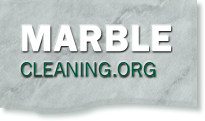| Home » Categories » Natural Stone Q & A’s |
Density of certain types of natural stone |
| Article Number: 1775 | Rating: Unrated | Last Updated: Mon, Apr 13, 2009 at 12:00 AM |
|
Q.Maurizio ! That is a Great honour to ask Stone Pro and a great man a question that bothers me Maurizio. Is there any information (table) about marble granite or travertine tile and their types that would have a density info in the description. For example *** Laurent Brown Marble - Honed - Density 0.2% *** or Tuscany Beige Travertine Honed (Semi-Polished) - density 0.3% - just to know theoretically if impregnator can be applied to it... I have read a lot of you answers and wondering how do you know which type of tile can or cannot be sealed - and assuming that it 's pretty hard to remember all types and sorts of the stone, i thought may be there is a book or another source where you get that exact information ). I appreciate your time and experience you sharing with us - great respect to you from Russia - We like and know you over here - With all Respect - From Alex
A.Hello Alex From Russia,
With Great sadness I must inform you that Maurizio was involved in a fatal automobile accident this past august 2008.He leaves a wonderful family and a world full of friends.He will be greatly missed.Here in the states we are continuing his efforts to be a consumer advocate and offer our help to anyone and everyone who asks us.In his honor and out of respect we continue his passion and work in the context and quality as he would have wanted us to.
To answer your question,There are charts listed on findstone .com that have tables relating to the density ratings of many different stones.We also sell a set of cd's
that have the same ratings.
Maurizio had much to say about sealing stones and that whole sealing cult that sealed everything in its path.
He stated that the a good rule of thumb was to determine its absorbency rating. If the information is available and it turns out to be 0.2% or less the application of a sealer will be useless.It may even turn out to be more of a problem then if not used at all.
If you dont have the technical info you can rely on real life field tests. Drop some water and cooking oil on the surface of a scrap piece of stone to be sealed. Let the drops set for 5 or 10 minutes and wipe them dry. If there is a darker spot under where the oil and water have been setting it would indicate the stone is absorbent and requires sealing.
He was convinced that the field test was more accurate than any listed rating of absorbency.His reason was sound as one should consider that italian breccia onicata upon checking listed absorbency ratings will find it from 0.2% up to 0.45%.Please note that the porousity levels are given to the stone in its raw state.Calcite based stones that are polished will exhibit much less if any porousity at all.
I hope we have clarified that for you.If you have any more questions please feel free to ask us.Check out our products and website at www.mbstone.com
Stu Rosen
|
Attachments

There are no attachments for this article.
|
Comments

There are no comments for this article. Be the first to post a comment.
|
Honed travertine shower wall and tumbled travertine shower floor
Viewed 0 times since Sun, Dec 30, 2007
Crack or fissure?
Viewed 0 times since Thu, Sep 27, 2007
dull, white, hazy film on outdoor granite table
Viewed 0 times since Sun, Mar 16, 2008
Brushed travertine around pool
Viewed 0 times since Fri, Oct 26, 2007
Brushed Travertine Mosaic Tile
Viewed 0 times since Wed, Apr 16, 2008
soap/hard water build up
Viewed 0 times since Tue, Mar 31, 2009
Kitchen and Family Room Flooring
Viewed 0 times since Wed, Jun 25, 2008
What should I use to seal red bordeaux granite countertops?
Viewed 0 times since Tue, Oct 27, 2009
Marble Bathroom Counter cleaned with bathroom cleaner
Viewed 0 times since Wed, Jun 25, 2008
Absolute Black Granite Tiles for counter top
Viewed 0 times since Sat, Feb 2, 2008
|
| KB Home | Advanced Search | Ask Question |
|
| Ask Your Natural Stone Questions |  |
|
|
|

 Add Comment
Add Comment